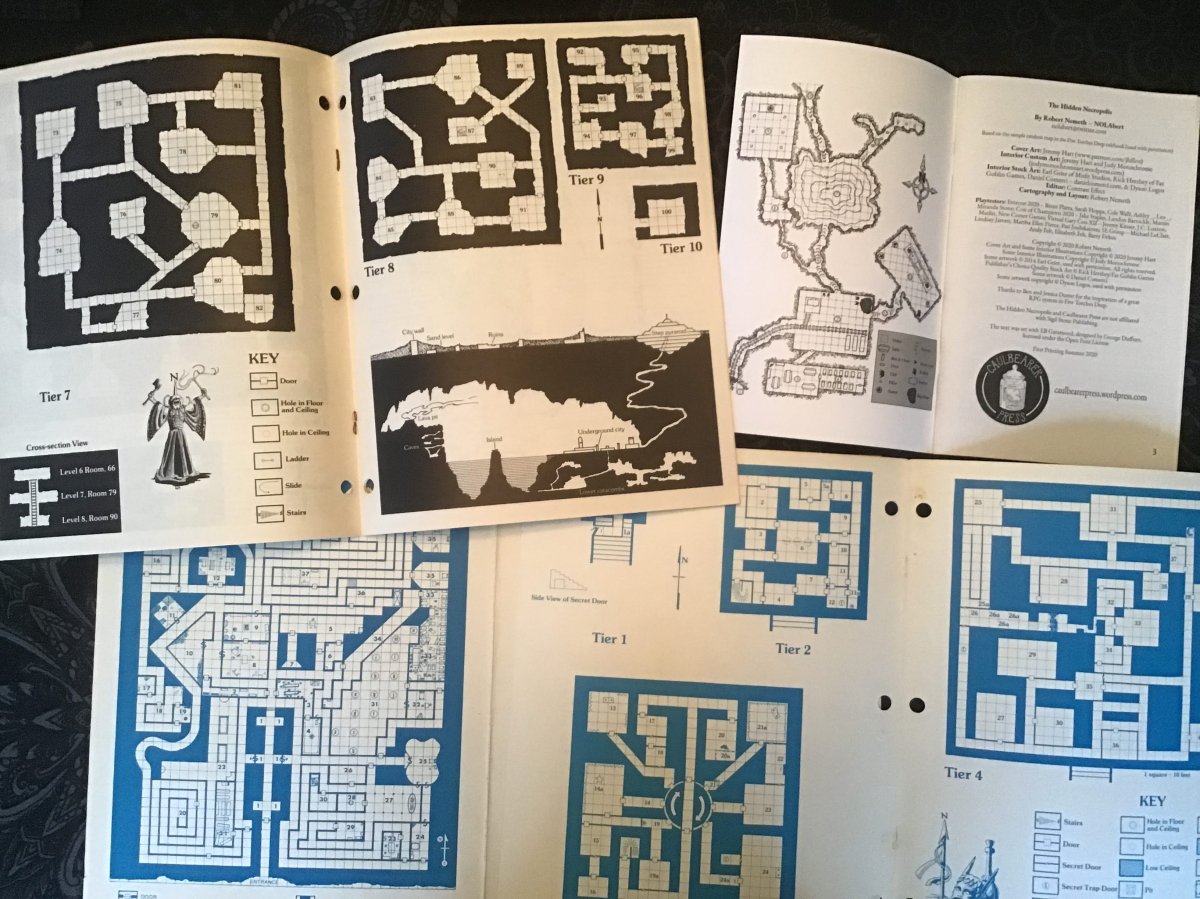A Dungeon Taxonomy
Dungeons are typically described by the number of rooms it contains (e.g., 5-room dungeons or mega-dungeons), but the terminology is limited. Here is a proposed taxonomy of dungeon sizes, useful not just by the number of rooms it contains but also by the number of (4-hour approximate) sessions it would take to complete the dungeon. The benefit of the following classification is to define dungeons by rooms or keyed encounters (since keyed encounters usually take in-game time) and to better estimate the time a party of PC’s will take to explore the location.
Dungeon Sizes
Mini-Dungeons: 2-10 rooms or keyed encounters
- One level, often linear
- Completed in a single session
- 5-room dungeons are a good example
Small Dungeons: 11-20 rooms or keyed encounters
- Usually one level but may have a lower level
- Completed in 1-2 sessions
- The Hidden Necropolis is a good example
Medium Dungeons: 21-90 rooms or keyed encounters
- Usually has at least 2 levels
- Completed in 2+ sessions
- B1: In Search of the Unknown (Quasqueton) is a good example
Large Dungeons: Roughly 100 rooms or keyed encounters
- Multiple levels
- Need multiple sessions to complete
- B4: The Lost City is a good example
Mega-Dungeons: Hundreds of rooms or keyed encounters
- Multiple levels, sub-levels, and entrances/exits
- Campaign Length (although bits and pieces may be used for hexcrawls and other adventures)
- Barrowmaze, Stonehell, Rappan Athuk are good examples

The Case for the Small Dungeon
In my campaigns, I regularly find myself preferring small dungeons for relatively short delves rather than mini-dungeons (like the 5-room dungeon). Small dungeons have more meat on them, large enough in terms of spatial configuration to allow for at least two entrances and more interesting choices in terms of directions for PC’s to travel. They also seem more like interesting and believable locations that someone would have taken the time to excavate and build than mini-dungeons.
But they require a relatively low time commitment to create from scratch and to run compared to medium or standard dungeons. The biggest downside is the lack of spatial complexity that can give larger dungeons a sense of excitement and nervous dread as the PC’s venture deeper into the labyrinth. Larger dungeons also give more opportunity for the involvement of factions since the dungeon is likely to offer a richer and more varied ecology than small dungeons.

The Case for Dungeon Variety
In campaigns, a variety of dungeon sizes adds to the complexity and verisimilitude that we would expect from a living world. Plus, player’s expectations are likely to be thwarted as they explore small versus larger dungeons. The limitations inherent in small dungeons may disappear somewhat when embedded within a world of dungeons of varying sizes. On any particular dungeon crawl, the players won’t necessarily know whether they are exploring a multi-level mega-dungeon or a much more self-contained mini-dungeon. With experience in the campaign world, the players will likely find it useful to gather information about the size of the dungeon besides its denizens and treasures it holds.
Note. Links to DriveThruRPG include my affiliate ID. Your support is appreciated.

